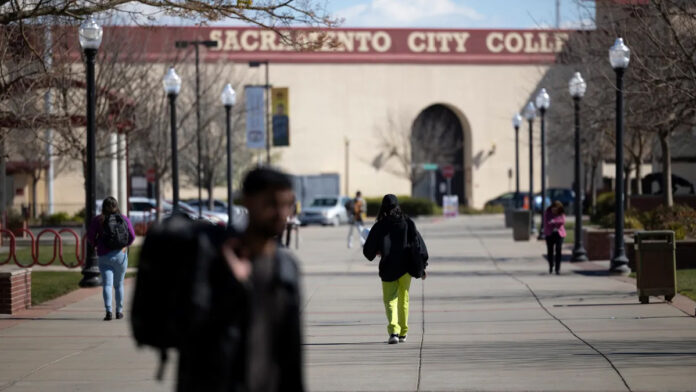by Suzanne Potter
California News Service
Oct. 4, 2023 – Federal student loan payments resume this month after a three-year pause, but people in public service have until the end of the year to benefit from recent repayment reforms.
The Public Service Loan Forgiveness Program will forgive the remainder of your federal student loan after you have worked for a public agency or certain nonprofits for 10 years and made 120 payments.
Jessica Saint-Paul, a physician assistant, public health educator and member of the American Federation of Teachers Local 1521, helps run student loan clinics for her union.
“They can come back and apply for Public Service Loan Forgiveness,” Saint-Paul explained. “And consolidate their loans to get into an income-driven repayment plan all on the same website: StudentAid.gov.”
During the Trump administration, the Department of Education rejected 98% of Public Service Loan Forgiveness applications. The American Federation of Teachers sued, and now the agency has to review every single application filed since 2007.
Reforms under the Biden administration mean people can get credit for the years they have already worked since October 2007, even if their loan was in forbearance and they had stopped making payments. Some of the most favorable terms expire Dec. 31.
Saint-Paul attended an American Federation of Teachers student debt clinic in 2018 and discovered she had the wrong repayment plan and faced the reset of her loan payment count to zero. She joined a class-action lawsuit against loan servicer Navient, which forced major changes to the industry. She noted once the feds finally forgave her loans, it gave her the financial freedom to secure her retirement and focus on getting married and starting a family.
“This allows freedom, for you to be able to live your life,” Saint-Paul contended. “You’re doing the work for the community, I can still do that and not have to worry about a $1,200 a month payment for the next 25 years. This has changed my life tremendously.”
American Federation of Teachers Local 1521 members have achieved more than $4 million of student loan forgiveness through Public Service Loan Forgiveness since March of last year.
Advocates for Hispanic community sponsor free financial literacy training
Free financial literacy training is now available in low-income neighborhoods in Los Angeles, hosted by two nonprofits: The Hispanic Access Foundation and Thrivent Financial Services.
The classes partner with Latino churches and come with a meal and child care, to make them as accessible as possible.
Christine Tamara, director of partnership engagement for the Hispanic Access Foundation, said 95% of participants said they have never had any kind of financial education.
“The Latino community works really hard,” Tamara pointed out. “We’re really trying to train them to make their money work for them. We’re really wanting to educate the community on the importance of financial literacy and planning, having a budget and investing.”
A report from the Latino Community Foundation found Latinos in California have $92 billion in spending power. The classes are called “Prepare for a Better Future,” and the next class is tomorrow night in South Los Angeles.
Tamara explained financial counselors help people use a tool on the Social Security website to predict what their benefits will be, come retirement age.
“We encourage them to put in their information and go to the government’s website,” Tamara noted. “So they kind of have an idea right now, if they were to retire, or at a certain age, what would be their Social Security check. And a lot of them are really shocked.”
The idea is to help people list out their sources of income and what they’re spending and then determine which things are a “need” and which are a “want.” Students are shown estimates that find if a person invests $50 a month in stocks, assuming a 10% return, in 40 years it would add up to almost $280,000.















